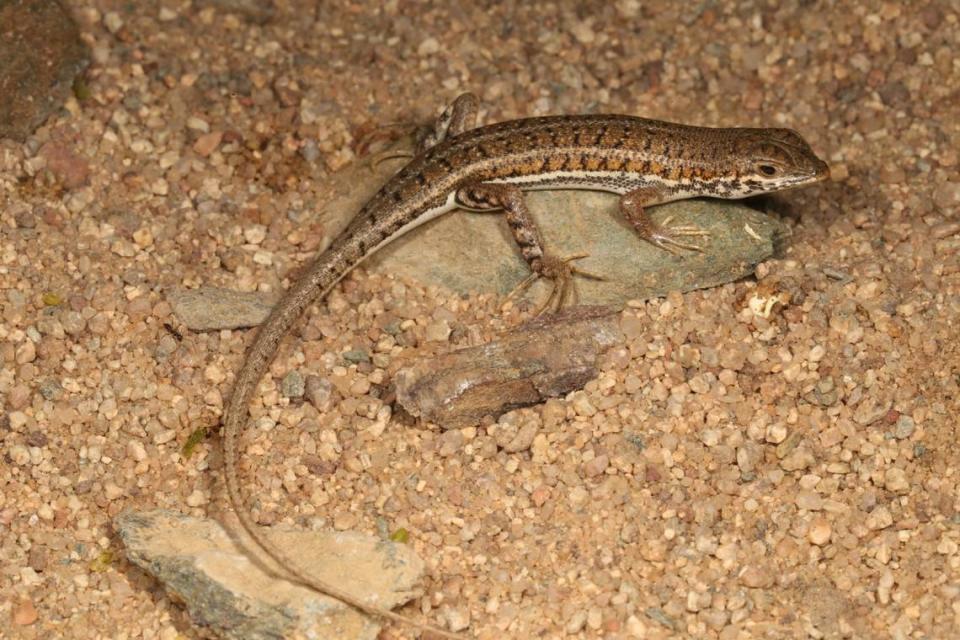‘Long’-tailed creature — with unique snout — found on Angola farm. It’s a new species
On a farm in Angola, a “long”-tailed creature scampered across the sand. The speckled animal might have been heading to its burrow or searching for a meal, but that didn’t really matter.
Visiting scientists interrupted the atypical farm animal and captured it. It turned out to be a new species.
The farm in Namibe Province was just one of the many sites researchers visited during a yearslong project to study lizards in the southern African country of Angola, according to a study published Feb. 20 in the Bulletin of the American Museum of Natural History.
Researchers had an ambitious goal: document every species of the Trachylepis lizard genus in Angola, the study said. The country had an “extraordinary diversity” of these lizards, known as skinks.
During their surveys in Namibe Province, researchers encountered some speckled skinks with unique snouts that didn’t match any known species. They took a closer look and realized they’d discovered a new species: Trachylepis wilsoni, or Wilson’s wedge-snouted skink.
Wilson’s wedge-snouted skinks are considered “medium-sized,” reaching about 5.6 inches in length, the study said. They have a “cylindrical” body, “long” tail and “wedge-shaped snout.” On their eyelids, the skinks have a “transparent,” window-like scale.
A photo shows the speckled coloring of a Wilson’s wedge-snouted skink. It has a light brown coloring that blends into the surrounding rocky sand. Faint white lines run down its back as do some orange and black blotches.

Discover more new species
Thousands of new species are found each year. Here are three of our most eye-catching stories from the past week.
→ Spiky creature — with 'bent' toes — found in cliffs of Vietnam
→ 'Distinct' creature — marked with an 'X' — found lurking in China
→'Robust' color-changing creature lays its eggs in foamy nests
Wilson’s wedge-snouted skinks were usually found in sandy woodland areas, including farms, campsites and along roads, the study said. The animals often dug burrows “near the base of vegetation.”
Researchers said they named the new species after Edward O. Wilson, a “North American biologist, naturalist and author” who died in 2021.
So far, Wilson’s wedge-snouted skinks have only been found in “inland areas” of Namibe Province, the study said. This coastal province is on the Angola-Namibia border. Angola borders the Atlantic Ocean to the west, the Democratic Republic of the Congo to the north, Zambia to the east and Namibia to the south.
The new species was identified by its snout, scale pattern, coloring and other physical features, the study said. DNA analysis found the new species had at least about 1% genetic divergence from other skinks.
The research team included Luis Ceríaco, Mariana Marques, Diogo Parrinha, Arthur Tiutenko, Jeffrey Weinell, Brett Butler and Aaron Bauer.
The team also discovered six more new species of skink, including another sand-loving one.
Deep-sea vampire squid suffocated 183 million years ago while hunting. Now it’s found
‘Medusa’ sea creature — with up to 11 tentacles — discovered by snorkelers off Mexico
Creature with ‘wedge-shaped snout’ found on riverbank in Angola. It’s a new species

